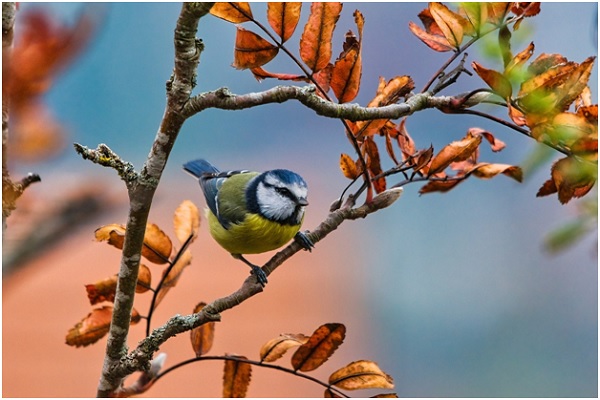Snowy Owls (Bubo scandiacus) All You Need To Know
Did you know snowy owls can weigh between 2 to 6 lbs? They have wings as wide as 3 to 5 feet, which help them soar as raptors. These birds are the largest in the Arctic.
They are known as Bubo scandiacus. Their white feathers and yellow eyes are amazing. They are true Arctic predators.
In many cultures, they symbolize wisdom and mystery. There are 14,000 to 28,000 breeding pairs worldwide. The International Union for the Conservation of Nature says they are “vulnerable”.
They play a key role in our ecosystem, help control rodent numbers, and tell us about the Arctic’s health.
The Beauty of the Snowy Owl
The snowy owl is a symbol of elegance and strength in the Arctic. Its unique looks make it stand out. With its varied colors, the snowy owl shows beauty and the harshness of its home.
Physical Characteristics
The snowy owl has special features that make it beautiful. Its round body is covered in white feathers, which keep it warm in the cold Arctic.
They can keep their bodies warm between 38 and 40 degrees Celsius. Their bright yellow eyes strike against their white feathers, helping them see well in the snow.
Colour Variations
Male and female snowy owls are different in color. Males have more white feathers, making them look ethereal, while females have darker spots that blend into the tundra.
Young owls have mottled feathers that change as they grow. These colours help them hide while hunting in the Arctic.

Snowy Owl Habitat and Distribution
The snowy owl lives in many places, mainly in the Arctic tundra of the Northern Hemisphere. We find their homes interesting, where they show how they can live in cold places. Knowing where they like to live and how they move helps us understand their life.
Preferred Environments
Snowy owls like open places like coasts, marshes, and flatlands. These areas are like their Arctic home, helping them see prey easily. Their homes are key for hunting and breeding.
The open spaces help them protect their hunting areas. This is especially true in winter when they might move south to Canada and the northern U.S.
Migratory Patterns
The snowy owl’s travels depend on food. When lemmings are plentiful, they stay in their Arctic homes. But when food is scarce, they travel far south, sometimes hundreds of miles.
This shows how they can adapt to changes in their environment. Young owls often travel long distances to find good places to live. This shows their ability to explore and find new homes.
The Diet of the Snowy Owl
Learning about the snowy owl’s diet helps us understand its important role in the Arctic. These birds mainly eat small mammals, with lemmings being key. In summer, when they’re plentiful, lemmings make up 95% of their diet.
Primary Prey: Lemmings
Lemmings are crucial for the snowy owl’s food. An adult owl eats 5 to 10 lemmings daily. This adds up to thousands a year. They also hunt other rodents, birds, and fish, showing their flexibility as a raptor.
In good lemming years, nests can have over 70 lemmings. This shows how vital lemmings are to their diet.
Hunting Techniques
Like the hare, the snowy owl uses smart hunting methods to catch prey. They sit and wait from high spots, watching for prey. Their sharp eyes help them spot prey from far away.
When they see prey, snowy owls swoop down silently with their strong talons, a skill they share with great grey owls. Unlike most owls, snowy owls hunt during the day in the Arctic summer, making them powerful predators that help control rodent numbers.

Breeding Behavior of the Snowy Owl
The breeding behaviour of snowy owls is fascinating and crucial for their survival. They start their courtship displays in late winter, and this is when they establish their breeding territories.
Their nesting and reproductive activities are tied to food, especially lemmings, which are a key food source for them.
Nest Construction and Clutch Size
Snowy owls build their nests on the ground, not in trees. They make shallow scrapes for the female to lay her eggs. The number of eggs, from 3 to 11, depends on the environment and prey availability.
When lemmings are plentiful, they can lay up to 16 eggs. This shows how food affects their reproductive success and the success of their breeding grounds.
Incubation Period
The incubation period for snowy owls is about 32 days. The female owl sits on the eggs, keeping them safe, while the male hunts for food, helping the female stay nourished.
After hatching, the chicks stay in the nest for 18 to 25 days. During this time, they learn to survive independently before leaving the nest.
Predators and Conservation Status
In the Arctic, snowy owls face few natural predators. These include foxes and certain types of gulls. They are top predators, helping keep small mammals like lemmings and rabbits in check.
However, human activities are a big threat to snowy owls. Car crashes and the destruction of their homes make them more vulnerable to threats like the great horned owl, which calls for urgent conservation action.
Natural Predators
Snowy owls have learned to survive in harsh conditions. Their main natural enemies are:
- Arctic foxes
- Specific gull species
Yet human actions like climate change and destroying snowy owl nests are bigger threats. With 14,000 to 28,000 breeding pairs, the IUCN considers them vulnerable.
Current Conservation Efforts
Efforts to save snowy owls are growing. We’re focusing on several important steps to protect the North American owl species.
- Watching snowy owl populations to learn more about their breeding grounds.
- Protecting their homes to keep them safe.
- Telling people why these birds are important for our ecosystems.
By saving snowy owls, we also protect the balance of the Arctic’s wildlife. We must tackle climate change and habitat loss to keep these birds safe.
Conclusion
The snowy owl is a key symbol of Arctic wildlife. It amazes us with its beauty and important role in nature. Sadly, their numbers have dropped from over 200,000 to less than 100,000, making them vulnerable like the great horned owl.
This decline shows how crucial it is to protect their homes. We must help these owls survive. They need healthy places where lemmings, their main food, can live.
Learning about snowy owls helps us understand their special lives and role in nature. There are about 28,000 breeding pairs. Their white feathers and unique sounds make them even more magical, distinguishing them as a North American owl.
Studying snowy owls teaches us about the need to save different species. By helping to save them, we also protect our planet. It’s important to keep these birds safe for the future of Arctic wildlife.







